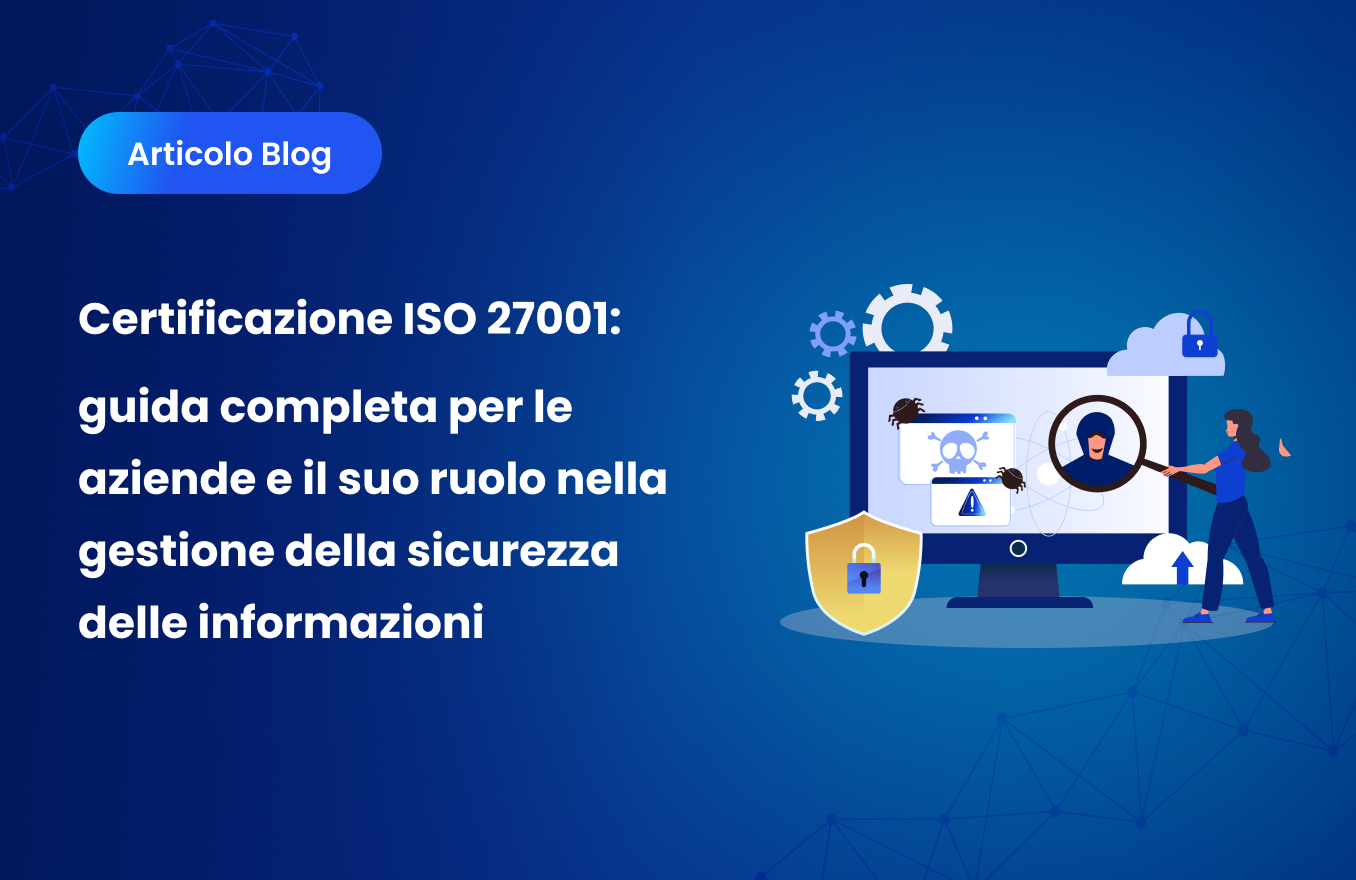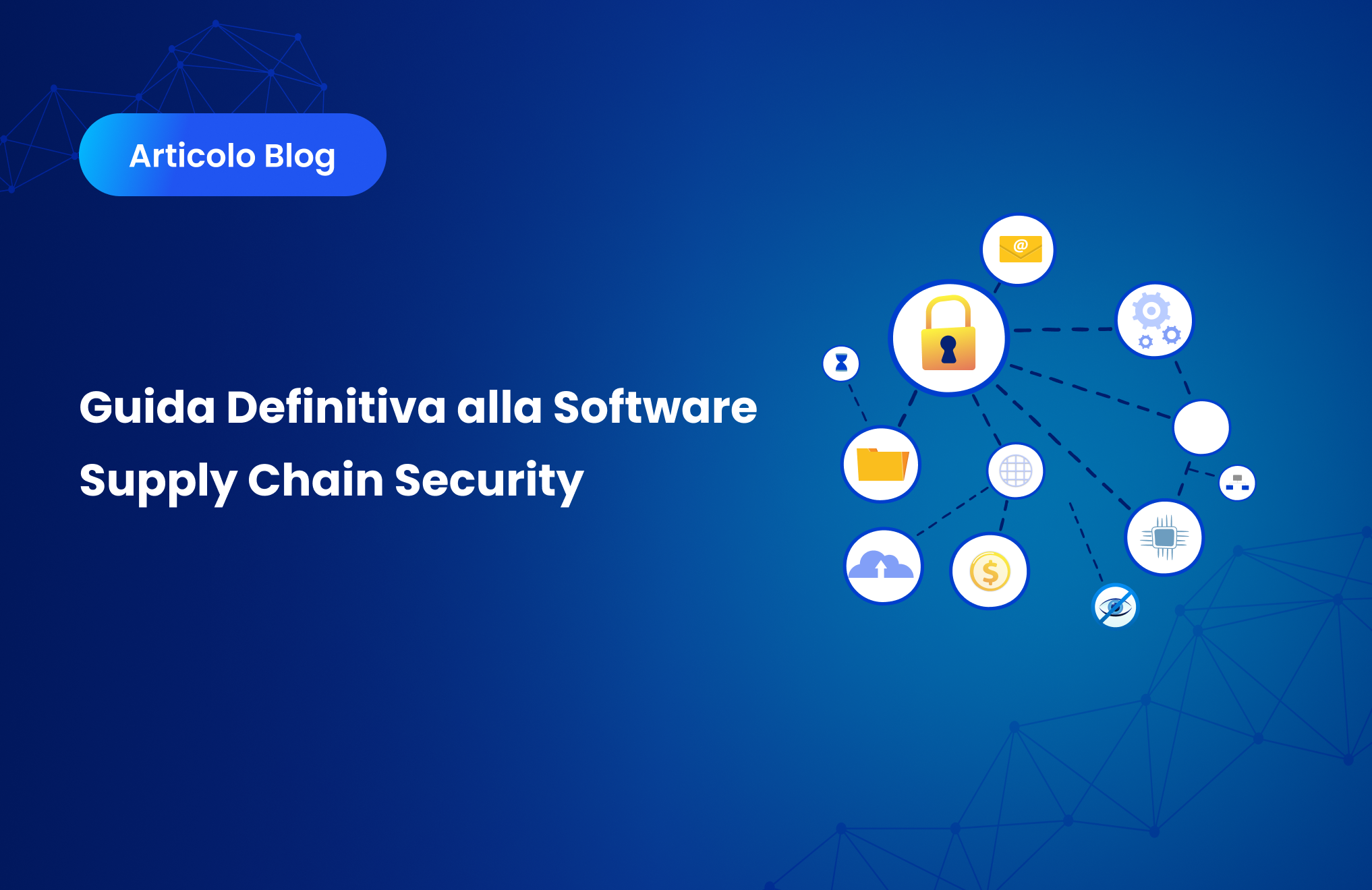Che cos'è il Penetration Testing as a Service (PTaaS)?

Le minacce informatiche sono ovunque oggi. Secondo un studio recente, il 43% degli attacchi informatici ha come obiettivo le piccole imprese. Quindi, questo è un campanello d'allarme per tutti.
È qui che entra in gioco il Penetration Testing as a Service (PTaaS).
È un solido approccio alla sicurezza informatica che incorpora l'automazione con l'esperienza umana per riconoscere e gestire le vulnerabilità nelle strategie di un'organizzazione.
In poche parole, prendi in considerazione l'assunzione di hacker etici per testare a fondo le tue difese. L'obiettivo? Scoprire e risolvere i punti deboli prima dei veri aggressori. È come avere sempre uno specialista della sicurezza al tuo fianco, che garantisce che i tuoi sistemi siano sempre protetti.
Allora, perché è importante?
- PTaaS utilizza test automatici e gestione esperta per individuare precocemente le vulnerabilità.
- Fornisce soluzioni di sicurezza informatica scalabili ed economiche.
- Il PTaaS conferma l'aderenza normativa e mantiene la sicurezza informatica.
Questo blog spiega come il PTaaS rafforza la sicurezza informatica migliorando la resilienza e diventando indispensabile nelle moderne strategie di gestione del rischio. Continua a leggere per saperne di più!
Differenza tra PTAAs e test di penetrazione tradizionali
Quando si confronta il Penetration Testing as a Service (altrimenti noto come pentesting as a service) con test di penetrazione tradizionali, emergono diverse differenze chiave che ne evidenziano vantaggi e sfide distinti. Ecco una tabella che riassume alcune differenze tra i due approcci:
Aspect PTAA come test di penetrazione tradizionaliModello di consegnaInterazioni su richiesta, in genere basate sul cloud, on-premise o pianificateScalabilitàFacilmente scalabile in più ambientiLimitato dalle risorse e dalla pianificazioneStruttura dei costiPrezzi in abbonamento o per testCosti iniziali basati su progetti, spesso più elevatiVelocitàImplementazione rapida, risultati più rapidi Tempi di configurazione e durate dei progetti più lunghiDisponibilità delle competenzeL'accesso a diversi set di competenze a livello globale si basa su specialisti locali o a contrattoTest continuiSpesso include opzioni di monitoraggio continuo, in genere limitate a valutazioni periodiche
Queste differenze evidenziano i principali modi in cui il PTAAs e i penetration test tradizionali differiscono l'uno dall'altro in termini di modello di consegna, scalabilità, struttura dei costi, velocità, disponibilità di esperti e metodo di test continuo.
Vantaggi del Penetration Testing as a Service (PTaaS)
Pentesting as a Service (PTaaS) offre una soluzione utile per le aziende che desiderano arricchire le proprie misure di sicurezza informatica. Diamo un'occhiata ad alcuni dei loro principali vantaggi:
- Valutazione continua delle vulnerabilità
PTaaS esegue test di penetrazione continui per identificare e mitigare le vulnerabilità di sicurezza su sistemi e reti. Questo metodo evita potenziali violazioni dei dati e attacchi informatici affrontando i rischi prima che gli aggressori li sfruttino.
- Efficacia dei costi
Le organizzazioni possono risparmiare sulle spese di infrastruttura e personale associate ai test interni esternalizzando i test di penetrazione ai fornitori di PTaaS. Ciò le incoraggia a distribuire le risorse in modo più efficiente mantenendo un livello di sicurezza sicuro.
- Approfondimenti e consigli degli esperti
L'accesso a un team di professionisti esperti della sicurezza tramite PTaaS garantisce alle aziende una guida esperta per migliorare la loro strategia di sicurezza complessiva. Pertanto, ciò comprende approfondimenti e suggerimenti utilizzabili personalizzati in base alle loro esigenze e vulnerabilità.
- Integrazione con il ciclo di vita dello sviluppo
Il PTaaS si integra perfettamente nel ciclo di vita dello sviluppo del software, fornendo agli sviluppatori un feedback tempestivo sulle modifiche al codice. Questo aiuta a identificare e risolvere i problemi prima di implementare nuovo codice, riducendo così il rischio che le vulnerabilità si presentino negli ambienti di produzione.
- Supporto rapido per la riparazione
I fornitori di PTaaS assistono rapidamente e forniscono una guida dettagliata per la correzione quando identificano le vulnerabilità. Pertanto, questo supporto include ausili visivi e istruzioni dettagliate per aiutare gli sviluppatori a colmare prontamente le lacune di sicurezza e rafforzare le proprie applicazioni.
- Riduzione dei tempi di inattività e dei rischi operativi
Le revisioni periodiche del PTaaS mitigano le interruzioni del servizio e le perdite finanziarie legate ai tempi di inattività riconoscendo e risolvendo attivamente le vulnerabilità. Di conseguenza, ciò garantisce la continuità aziendale e attenua l'impatto di probabili minacce informatiche sulle operazioni.
Pertanto, le aziende possono utilizzare il PTaaS per affrontare efficacemente i rischi, supportare la conformità normativa e proteggere le proprie risorse digitali dalle crescenti minacce informatiche.
Come funziona il Penetration Testing as a Service (PTaaS)?
Pentesting as a Service trasforma il modo in cui le aziende valutano e migliorano la propria sicurezza informatica. Ecco come funziona:
Fase 1: Installazione e configurazione
Le organizzazioni sottoscrivono un PTaaS, configurando parametri di test come ambito e frequenza.
Fase 2: Test automatici
Il PTaaS esegue autonomamente test di sicurezza, scansionando reti, applicazioni e sistemi alla ricerca di vulnerabilità.
Fase 4: Test manuale
Oltre alle scansioni automatiche, gli esperti di sicurezza implementano test manuali per riconoscere le vulnerabilità che gli strumenti automatici potrebbero non rilevare. In quanto tale, garantisce una valutazione completa della sicurezza.
Fase 5: Rapporti in tempo reale
Le vulnerabilità identificate vengono segnalate in tempo reale tramite dashboard intuitive, che ne descrivono in dettaglio la gravità e il possibile impatto.
Fase 6: Guida alla riparazione
Report e risorse dettagliati aiutano le aziende a comprendere e affrontare le vulnerabilità in modo efficace.
Fase 7: Monitoraggio e supporto continui
PTaaS fornisce monitoraggio e supporto continui, garantendo il mantenimento proattivo della postura di sicurezza.
Fase 8: Feedback e miglioramento
Le organizzazioni possono migliorare la resilienza complessiva perfezionando regolarmente le proprie procedure di sicurezza con l'aiuto degli approfondimenti dei test PTaaS.
Il PTaaS aiuta le organizzazioni a velocizzare i processi di test di sicurezza, ottenere informazioni rapide e mantenere una forte protezione contro le nuove minacce informatiche.
Sfide legate all'utilizzo del PTaaS
Pentesting as a Service offre alle aziende la flessibilità di test di sicurezza continui, ma presenta alcune sfide. Ecco alcune delle sfide critiche legate all'utilizzo del PTaaS:
- Restrizioni di terzi
Non tutti i fornitori consentono test continui con la penna. Pertanto, le aziende devono spesso richiedere test in anticipo, con conseguenti vincoli di pianificazione. Ad esempio, AWS richiede un'autorizzazione preventiva, limitando le possibilità di test frequenti.
- Conservazione e gestione dei dati sensibili
Ogni fornitore di PTaaS gestisce i dati sensibili in modo diverso. Pertanto, utilizzano spesso la crittografia per motivi di sicurezza. Tuttavia, emergono complicazioni nella gestione cruciale, che influiscono sulle pratiche di archiviazione dei dati e sulla conformità.
- Limitazioni di budget
Il coordinamento automatico massimizza la frequenza dei test. Tuttavia, i programmi di sicurezza sottofinanziati hanno difficoltà a risolvere le vulnerabilità che si riscontrano più spesso. Pertanto, la pressione sulle risorse può rallentare le attività di riparazione.
Una pianificazione e un allineamento accurati con le funzionalità dei fornitori sono necessari per affrontare queste difficoltà e ottenere un'implementazione PTaaS sicura ed efficace.
Migliora la tua sicurezza informatica con Resilient X
ResilientX è la scelta ideale per le aziende seriamente interessate alla sicurezza informatica proattiva. Offriamo servizi avanzati di test di penetrazione che ti tengono al passo con le minacce informatiche.
Siamo dotati di una piattaforma unificata di gestione dell'esposizione che unifica Attacco Superficie, Web, Test di sicurezza della rete, Automazione della sicurezza nel cloude Gestione del rischio di terze parti.
Allora, perché Resilient X? Vediamo:
- Eccellenza specializzata
Eccelliamo nei test di penetrazione delle applicazioni Web e della rete, fornendo strategie di difesa precise che salvaguardano le tue risorse digitali.
- Conformità completa
Preparati per la certificazione ISO 27001 e oltre con i nostri servizi di conformità completi. Garantiamo che le tue difese soddisfino e superino gli standard di settore come GDPR, HIPAA e PCI-DSS,
- Stai al passo con le minacce
Collabora con Resilient X per reagire alle minacce e prevenirle in modo proattivo. Unisciti alle innumerevoli aziende che traggono vantaggio dal nostro approccio proattivo alla sicurezza informatica, acquisendo informazioni che rafforzano le tue difese contro le minacce in evoluzione.
Connettiti subito con Resilient X per rafforzare la tua sicurezza informatica e mantenere una presenza digitale resiliente.
Conclusione
Non ci sono dubbi sull'importanza della sicurezza informatica oggi. Pertanto, il penetration testing as a service (PTaaS) è una soluzione eccellente che unisce automazione e supervisione di esperti. Come evidenziato in questo blog, il PTaaS offre molti vantaggi, tra cui la valutazione continua delle vulnerabilità, l'efficacia dei costi, le informazioni degli esperti e la perfetta integrazione nei cicli di vita dello sviluppo. Tuttavia, l'utilizzo del PTaaS non è privo di sfide, come la gestione delle restrizioni di terze parti e la responsabilità dei dati sensibili. Noi di Resilient X, ci impegniamo ad aiutare le aziende ad affrontare queste sfide e a realizzare solide difese di sicurezza informatica.
Adotta misure proattive per proteggere la tua organizzazione. Contatta Resilient X oggi e proteggi le tue difese di sicurezza informatica con PTaaS. Insieme, possiamo proteggere il tuo futuro digitale.
FAQ
1. Quali tipi di test sono inclusi nei PTAA?
Il PTaaS comprende in genere una varietà di test, come test di penetrazione della rete, test di applicazioni online, test di applicazioni mobili e simulazioni di ingegneria sociale. Questi test offrono una copertura di sicurezza completa affrontando vari vettori di attacco.
2. Il PTaaS è adatto alle aziende che utilizzano servizi cloud?
Sì! Lo scopo del PTaaS è testare ambienti cloud, come l'infrastruttura ospitata su AWS, Azure o Google Cloud. Garantisce che i tuoi dati e le tue app basate su cloud siano al sicuro dalle intrusioni.
3. In che modo il PTaaS aiuta a migliorare la risposta agli incidenti?
Attraverso il rilevamento frequente delle vulnerabilità, il PTaaS consente alle aziende di affrontare in modo proattivo i problemi prima che diventino sfruttabili. Questa strategia preventiva riduce la possibilità e l'effetto di attacchi informatici di successo, rafforzando le capacità di risposta agli incidenti.
4. Il PTaaS è costoso?
Sebbene le opinioni in merito siano divergenti, molti ritengono che sia più conveniente rispetto alla gestione delle violazioni della sicurezza o al mantenimento di un dipendente della sicurezza informatica a tempo pieno. Paghi solo quello che usi, su base mensile, trimestrale o annuale, il che può soddisfare una varietà di piani di spesa.
5. Con quale frequenza devono essere condotte le valutazioni del PTAAs?
La sensibilità dei dati, la propensione al rischio e le leggi del settore sono alcune delle variabili che determinano la frequenza con cui è necessario ottenere le valutazioni PTaaS. Le organizzazioni in genere scelgono valutazioni semestrali o semestrali, ma le tue esigenze potrebbero imporre una pianificazione diversa.



.svg)
.svg)
.svg)
.svg)



.svg)
.svg)
.svg)
.svg)
.svg)
.svg)
.svg)
.svg)



